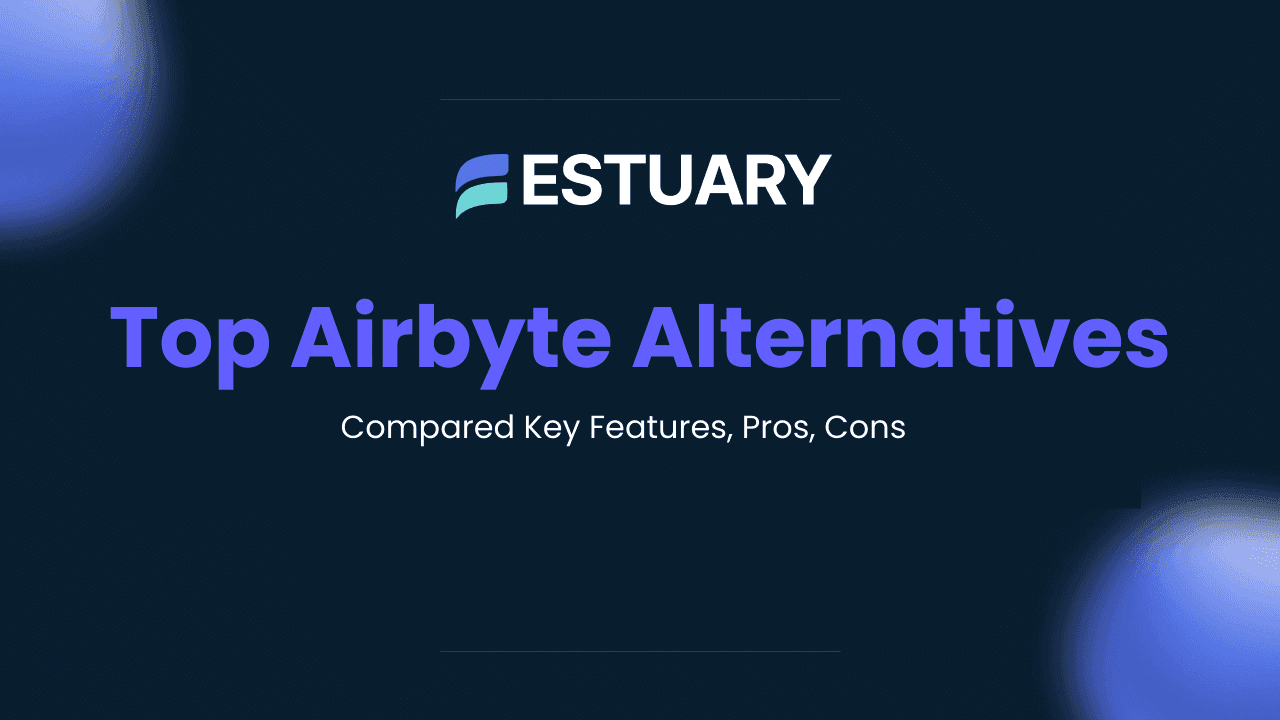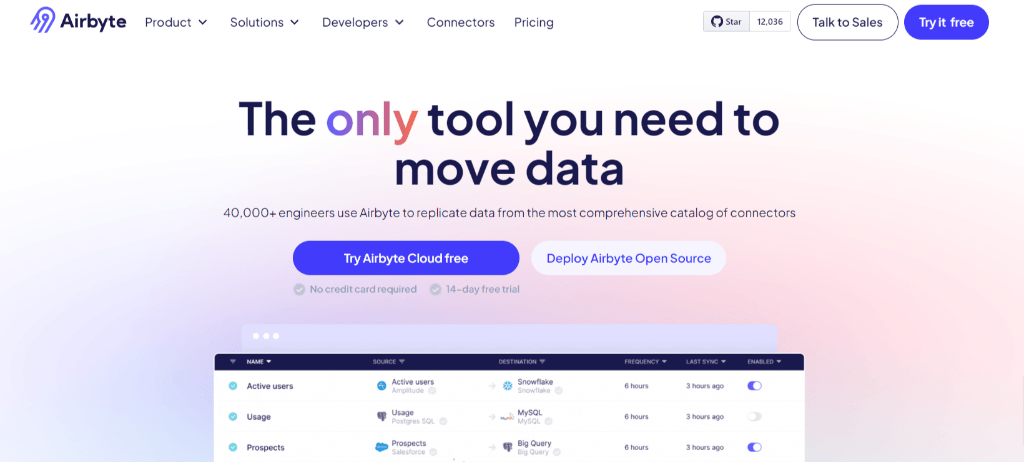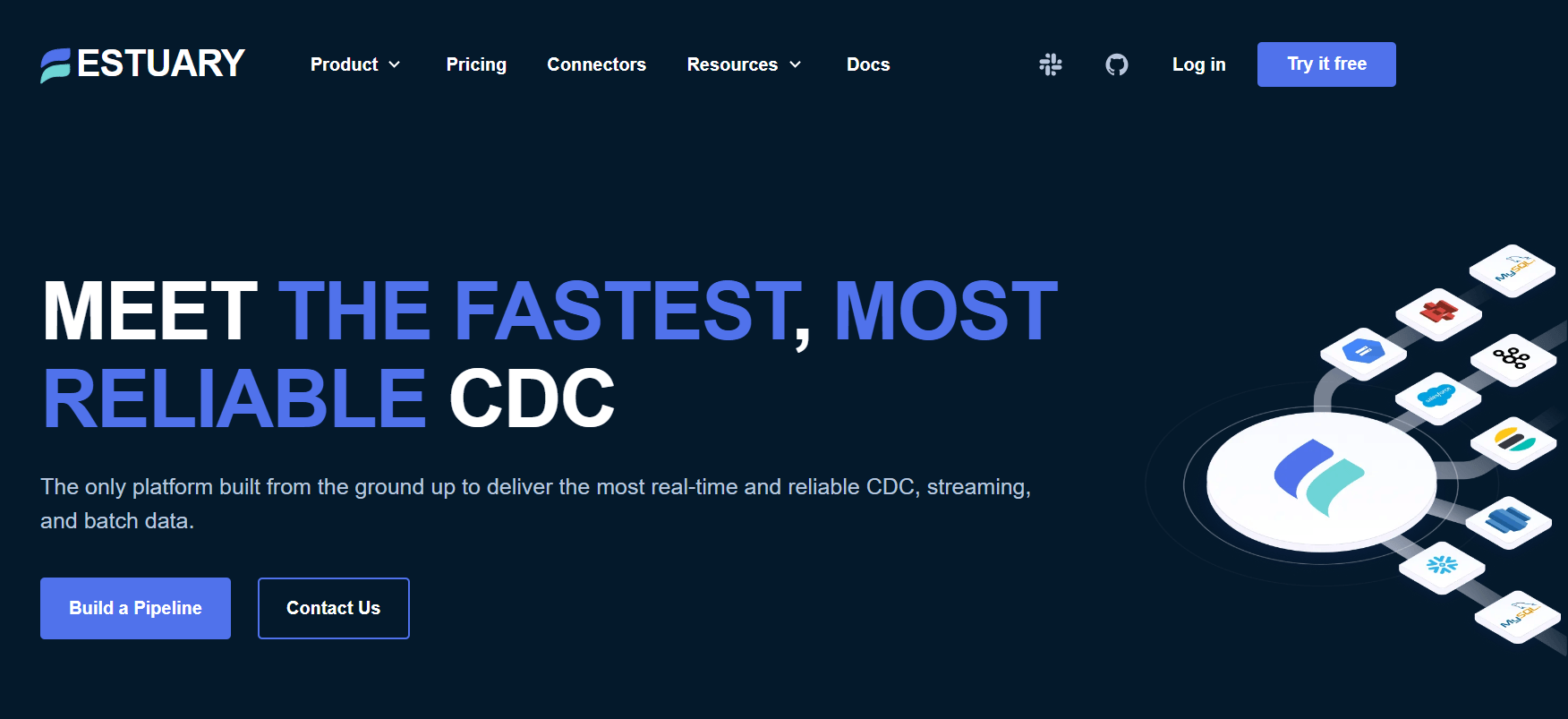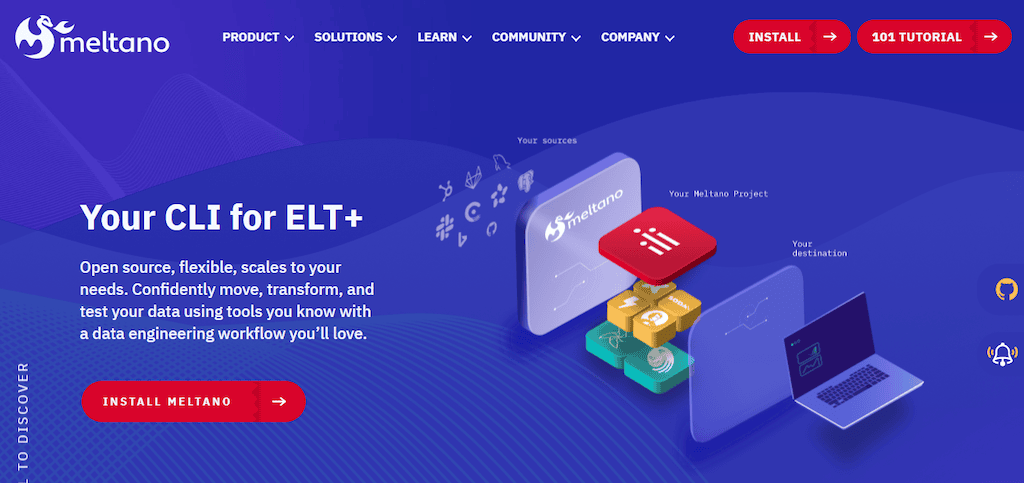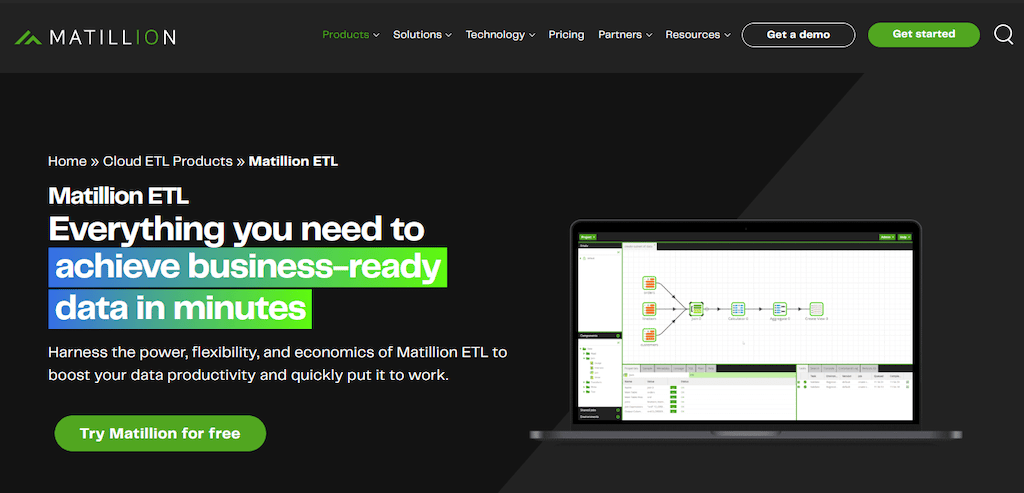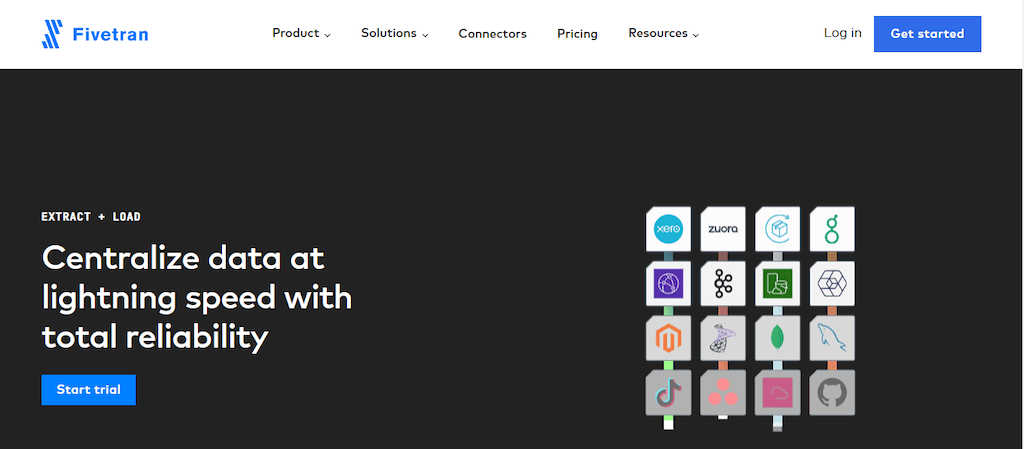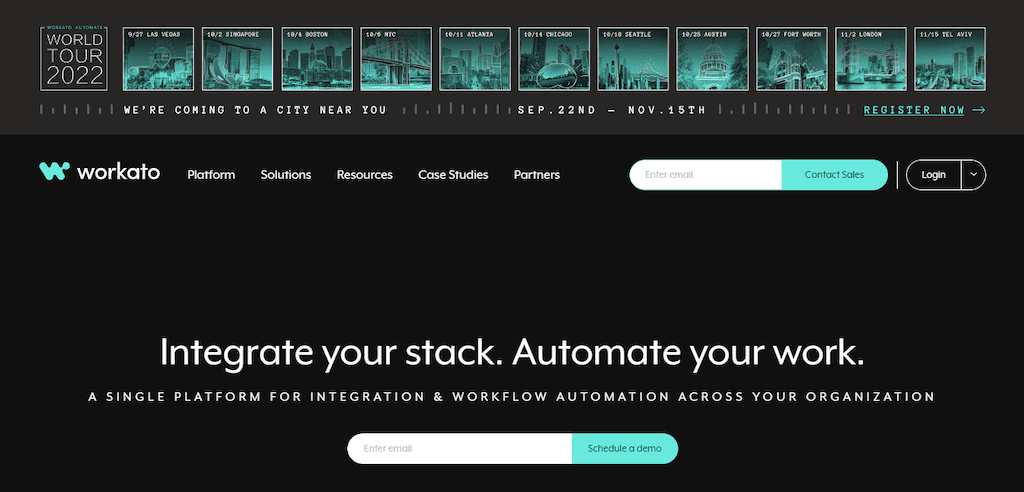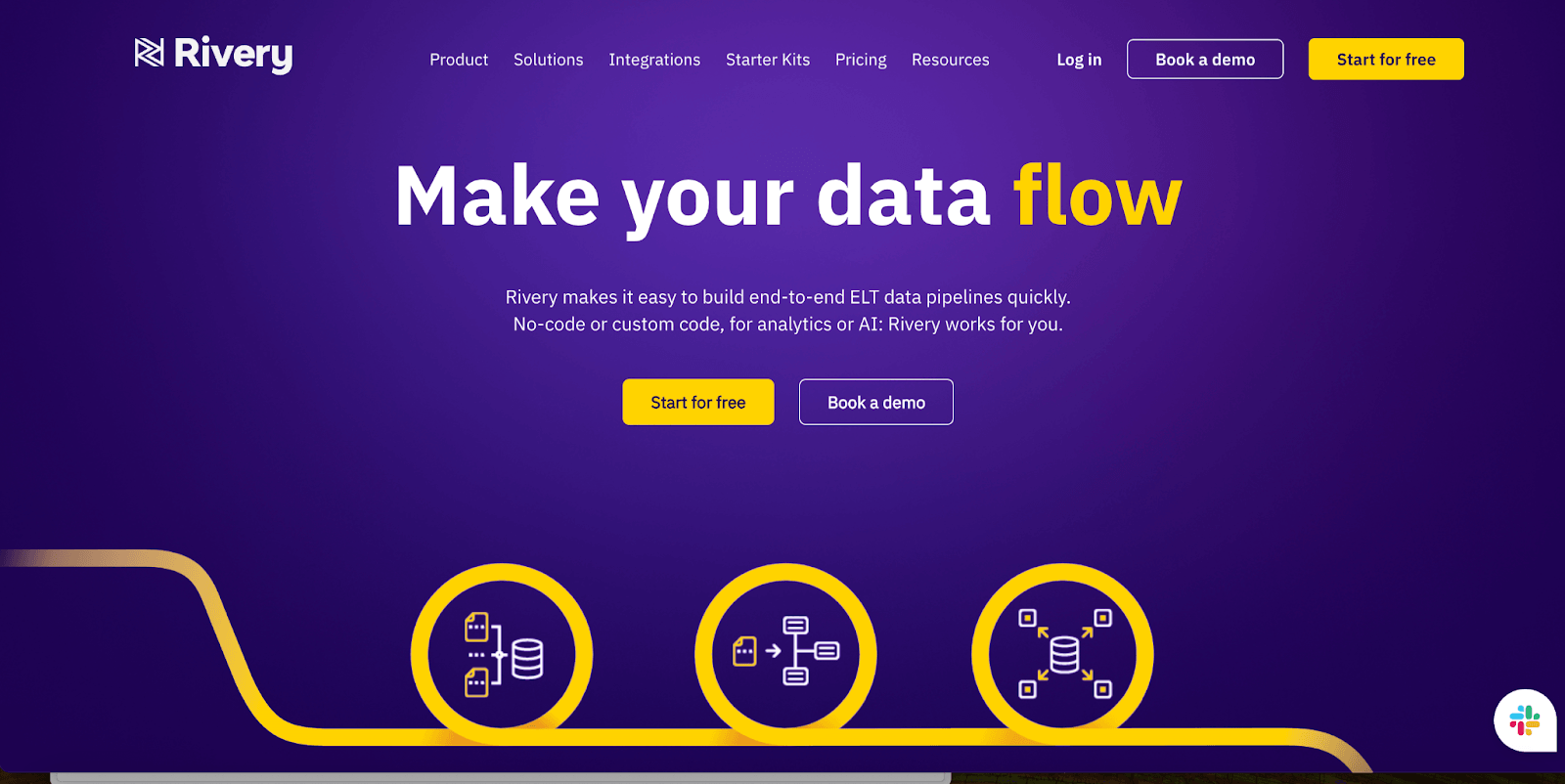
Moving data from source systems to a data warehouse or data lake is a critical step in turning raw information into actionable insights. But how should your team approach it?
Should you build custom data pipelines from scratch, pay for an out-of-the-box data connector, or choose an open-source solution?
For many, Airbyte is the go-to open-source data integration tool. But it’s not the only option—and it may not be the best fit for your needs.
If you're looking for an Airbyte alternative, we’ll explore the top options available in 2025, including Estuary Flow, Meltano, and Fivetran. We’ll break down the pros, cons, and key features of each to help you decide which data integration tool works best for your business.
Before jumping into the alternatives to Airbyte, let’s take a quick look at what Airbyte is and its limitations.
What is Airbyte?
Airbyte is an open-source ELT data integration tool that also offers a no-code SaaS platform. Since its launch in 2020, it has quickly gained popularity in the ELT and data integration space.
Like other ELT platforms, Airbyte uses connectors to integrate various data sources and destinations. What sets Airbyte apart is its focus on supporting a wide range of connectors, achieved through a community-driven open-source model that encourages contributions from users and developers.
Key features of Airbyte
- Open-Source and SaaS Options: Choose between self-hosted and managed ELT versions.
- Transformation Capabilities: Integrates with dbt, allowing engineers to design custom transformations within ELT workflows.
- Extensive Connector Library: Broad support for data sources and destinations in ELT processes.
- Community Contributions: Actively supported by user and developer contributions.
Why Would Businesses Need an Airbyte Alternative?
While Airbyte is a powerful tool, businesses often seek alternatives due to:
- Inconsistent Connector Quality: Due to its open-source model, connectors vary in quality since many are community-built. This can lead to uneven performance across connectors.
- Frequent Updates: As a rapidly evolving platform, Airbyte introduces frequent updates, which may disrupt established workflows and require users to adapt to new changes.
- Limited Transformation Capabilities: Airbyte mainly supports ELT workflows, focusing on extraction and loading rather than in-platform transformations, which requires users to integrate with tools like dbt for post-load transformations.
- Dependency on Self-Hosting for Open-Source: The open-source version requires users to manage their own infrastructure, adding complexity and resource needs for teams that choose this option over the SaaS.
Understanding Airbyte Pricing
Airbyte Cloud uses a volume-based pricing model, starting at $10 per GB of data moved from databases and $15 per million rows for API and custom sources. While it offers a free tier for small-scale use, costs can escalate quickly for production workloads—especially when frequent backfills or large-scale syncs are required. Compared to usage-based platforms like Estuary Flow, Airbyte's pricing may become less predictable as data volume grows.
Airbyte Alternatives Compared: Features and Pricing
| Tool | Real-Time Support | Open Source | Deployement Options | Transformations | Pricing Model |
| Estuary Flow | ✅ sub-100ms streaming with CDC | Yes, core components are OSS | SaaS, private cloud | dbt + streaming-native transforms | Free Tier, $0.50/GB + $0.14/hr |
| Airbyte | ❌ Batch (5+ mins) | Yes | SaaS, Self-hosted | dbt Cloud | Free Trail, $10/GB, $15M rows |
| Fivetran | ❌ Batch based | No | SaaS, Limited Private | dbt Core | Monthly Active Rows |
| Meltano | ❌ Batch | Yes | Self-hosted | dbt, Custom CLI | Free (OSS) |
| Matillion | ❌ Batch | No | Self-hosted | Built-in | License-based |
| Stitch | ❌ Batch | No | SaaS | Minimal | Free + Per-row |
| Warkato | ✅ Yes | No | SaaS | No-Code UI | Enterprise pricing |
| Rivery | ❌ Batch-based | No | SaaS | Built-in (no dbt needed) | Tiered usage-based |
Now that we’ve compared the top airbyte competitors at a glance, let’s take a closer look at what each platform offers.
Top 7 Airbyte Alternatives
Here's a list of the top 7 Airbyte alternatives & competitors in 2025:
Estuary Flow
Estuary Flow is a real-time data integration platform that combines open-source technology with a cloud-hosted, low-code SaaS solution. Unlike Airbyte, which focuses on batch-based SaaS connectors, Flow specializes in high-scale technology systems like databases, filestores, and pub-sub messaging. Its real-time data streaming capabilities make it a powerful alternative for companies that need low-latency, high-volume data movement. With support for analytical and operational (reverse ETL) pipelines, Flow is designed for teams looking for ultra-fast, cost-efficient data processing.
Key Features
- Advanced Change Data Capture (CDC) – Captures record changes in real time with ultra-low latency and minimal impact on source systems.
- High Scalability & Efficiency – Handles data at 7GB+/sec with sub-second latency, ensuring fast, efficient data movement.
- Flexible Deployment Options – The only vendor offering open-source, private cloud, and multi-tenant SaaS deployment models.
- Extensive Connector Support – Provides 150+ native, low-latency connectors and supports 500+ additional connectors from Airbyte, Meltano, and Stitch.
- Cost-Effective Pricing – Competitive $0.50 per GB moved and $100 per connector per month pricing structure.
Pros
- Real-time data streaming – Moves large datasets in milliseconds, unlike batch-based ETL tools.
- Advanced CDC capabilities – Captures data changes instantly with minimal source load.
- Multiple deployment options – Offers open-source, private cloud, and SaaS choices.
- Broad connector compatibility – Supports 650+ connectors, combining native and third-party options.
- Scales efficiently – Optimized for high-frequency updates in complex, large-scale environments.
- Transparent, cost-effective pricing – Simple, usage-based pricing with no hidden fees.
Cons
- May require technical expertise – While low-code, optimizing real-time pipelines may need some engineering knowledge.
See the comparison in detail: Estuary vs Airbyte
Meltano
Meltano is an open-source data integration platform built for data engineers who prefer a code-first approach. Designed around pipelines-as-code, it provides strong CLI support, version control, and CI/CD integration, making it ideal for teams that follow software development best practices. Meltano leverages Singer taps for data extraction, offering one of the largest connector ecosystems, and integrates seamlessly with dbt for transformation and Apache Airflow for orchestration.
Key Features
- CLI-Driven Workflow – Built for command-line execution, enabling automation and scripting.
- Wide Connector Support – Uses Singer taps, providing access to numerous data sources.
- Version Control & CI/CD Integration – Ensures repeatable, well-managed data pipelines.
- dbt & Apache Airflow Compatibility – Supports modular transformation and orchestration.
- Flexible & Extensible – Open-source nature allows teams to customize and extend functionality.
Pros
- Robust CLI & Version Control Support – Built for developers who follow programming best practices, offering better control over data workflows.
- Extensive Connector Support – Thanks to Singer taps, Meltano offers more connectors than most data integration platforms.
- Customizable & Flexible – Since it's open-source, teams can modify and extend the platform based on their specific needs.
Cons
- Steep Learning Curve – Lacks a user-friendly UI, making it less accessible for non-technical users.
- Requires Developer Expertise – Best suited for data engineers comfortable with coding, CLI operations, and version control.
Want a deeper dive? Read our full comparison of Airbyte vs Meltano.
Matillion
Matillion is a self-hosted ETL platform designed for organizations that prioritize data privacy, security, and control over their infrastructure. Unlike many CLI-based open-source alternatives, Matillion provides a user-friendly UI for building and managing data pipelines, making it accessible to a broader range of users. It offers dedicated customer support, which is a key differentiator from most open-source competitors. However, while its UI-driven transformation capabilities are robust, it does not integrate with external transformation tools like dbt.
Key Features
- Self-Hosted Deployment – Runs on your own infrastructure, ensuring full data control.
- Intuitive UI for ETL – Designed with a visual, drag-and-drop interface for pipeline management.
- Built-In Transformation Engine – Processes transformations without requiring third-party tools like dbt.
- Dedicated Customer Support – Offers professional assistance for deployment and troubleshooting.
- Enterprise-Focused Security – Suitable for industries with strict data governance requirements.
Pros
- User-Friendly Interface – No need for extensive CLI knowledge; enables a visual approach to ETL.
- Full Product Support – Includes dedicated customer service, unlike most open-source competitors.
- Secure & Private – Ideal for organizations that require on-premise or cloud-hosted control over their data.
Cons
- Vendor Lock-In – Not as flexible as open-source options, requiring commitment to Matillion’s ecosystem.
- UI Learning Curve – While user-friendly, the interface has a learning curve for new users.
- Limited Connector Availability – Fewer built-in connectors compared to Airbyte and Meltano.
Curious how these two stack up? See Airbyte vs Matillion for the full feature-by-feature breakdown.
Fivetran
Founded in 2012, Fivetran is a pioneering cloud-based data integration platform, trusted by thousands of customers globally. It offers a low-code environment with an extensive array of proprietary connectors, simplifying the process of centralizing data from various sources into data warehouses. Unlike some competitors, Fivetran is a fully closed-source platform, with all connectors developed in-house. While it has been a dominant force in the industry, recent advancements in other data integration solutions have introduced fresh competition, providing users with more alternatives.
Key Features
- Extensive Connector Library – Supports a wide range of proprietary connectors for seamless data integration.
- Automated Data Synchronization – Continuously updates and syncs data without manual intervention.
- User-Friendly Interface – Provides an intuitive UI for easy setup and management of data pipelines.
- Fully Managed Service – Eliminates maintenance burden with automatic updates and infrastructure handling.
- Enterprise-Grade Security – Complies with SOC 2, GDPR, and HIPAA security standards.
Pros
- Large number of connectors – Extensive proprietary connector support makes integration easier.
- Established platform – Trusted by thousands of businesses with comprehensive documentation available.
- Easy-to-use UI – Designed for users of all technical levels, requiring minimal setup.
- Automated pipeline management – Data syncs run automatically, reducing manual workload.
- Strong security compliance – Adheres to industry security and privacy standards.
Cons
- No pre-load transformation capabilities – Lacks built-in transformation tools, requiring external solutions.
- No extensibility – Closed-source with no flexibility for custom connectors.
- Opaque pricing – Users report unexpected charges and lack of clear cost breakdowns.
- Expensive for large data volumes – Monthly Active Rows (MAR) pricing can lead to high costs as data scales.
- Slow customer support – Users have experienced delays in getting support responses.
Need more detail? Here’s our side-by-side comparison: Airbyte vs Fivetran
We’ve also compared Fivetran vs Matillion for teams weighing enterprise ETL platforms.
Stitch Data
Stitch Data, a cloud-based ETL platform owned by Talend, offers a simple, no-code solution for transferring data to warehouses. With over 130 pre-built connectors and a self-service model, it caters to businesses looking for a budget-friendly and easy-to-use Airbyte alternative. Smaller teams benefit from its free tier (up to 5 million rows per month), while larger organizations can scale with its paid plans. However, Stitch has limited transformation capabilities, requiring additional tools for complex data processing.
Key Features
- 130+ Connectors – Supports a wide range of integrations with various data sources.
- No-Code Setup – Designed for ease of use, making data ingestion simple for all users.
- Free Tier Available – Offers up to 5 million rows per month at no cost.
- Singer-Based Extensibility – Supports open-source connectors via the Singer framework.
- Built-In Orchestration & Monitoring – Provides basic visibility into data pipeline execution.
Pros
- Extensible through Singer – Integrates with open-source connectors, allowing for additional flexibility.
- Orchestration & visibility features included – Helps monitor data pipeline execution.
- Integrates with Talend Data Fabric – Works seamlessly with other Talend products.
- No-code, self-service model – Quick to set up with minimal technical expertise required.
- Free tier for small workloads – Ideal for startups and small teams with low data volumes.
Cons
- Pricing scales with row usage – Beyond the free tier, pricing is based on monthly rows, which can become costly.
- Limited transformation support – Minimal built-in transformation capabilities, requiring external tools like dbt.
- Not ideal for complex ETL needs – Lacks advanced data processing features compared to some competitors.
See a direct comparison in our full guide: Airbyte vs Stitch.
Workato
Workato is an integration platform as a service (iPaaS) that goes beyond traditional ETL/ELT tools by enabling real-time automation across entire business workflows. Unlike Airbyte, which primarily focuses on data movement, Workato facilitates full-system integrations, allowing organizations to automate tasks across multiple platforms. This makes it a strong choice for businesses looking for a holistic automation solution rather than just a data pipeline tool.
Key Features
- Real-Time Integration – Enables instant data synchronization for operational analytics and workflow automation.
- Broad Connector Library – Supports hundreds of business applications, including CRM, ERP, and SaaS tools.
- Workflow Automation – Automates cross-platform processes, reducing manual intervention.
- Enterprise Security & Compliance – Provides robust governance features for data security.
- Scalability – Designed to handle enterprise-wide system integrations efficiently.
Pros
- Real-time data processing – Suitable for small-scale operational analytics and workflow automation.
- Extensive connectors – Supports a large number of applications for seamless integration.
- End-to-end automation – Goes beyond ETL to automate entire business processes.
- No-code/low-code – User-friendly interface for quick implementation.
- Secure and enterprise-ready – Compliance with industry standards for data security.
Cons
- Expensive for some businesses – Pricing can be high for organizations with extensive automation needs.
- Not ideal for large-scale data movement – Better suited for workflow automation rather than bulk ETL.
- Steep learning curve – While no-code, configuring complex workflows requires expertise.
Rivery
Rivery is a fully managed, cloud-native data integration platform that offers ETL, ELT, and reverse ETL capabilities within a single product. Unlike Airbyte and other open-source tools that require external transformation tools like dbt, Rivery includes built-in orchestration, transformations, and logic layers for a complete data workflow solution. It’s designed to serve teams looking for ease of use, fast setup, and enterprise-grade support without dealing with infrastructure or code.
Key Features
- All-in-One Platform – Combines data ingestion, transformation, and delivery in a unified SaaS interface.
- Built-In Reverse ETL – Syncs data back to operational tools like Salesforce or Slack.
- No-Code/Low-Code Pipelines – Designed for analysts, engineers, and business users alike.
- Integrated Transformation Engine – Eliminates need for dbt or custom transformation orchestration.
- Pre-Built Kits – Offers templates for common use cases like marketing analytics, finance, and SaaS reporting.
Pros
- Unified pipeline management – ETL, ELT, and reverse ETL in one tool.
- Fast time to value – Prebuilt templates accelerate setup and use-case deployment.
- User-friendly UI – Great for teams without deep engineering resources.
- Reliable SaaS infrastructure – No self-hosting or DevOps required.
- Good enterprise support – Dedicated SLAs, monitoring, and customer success.
Cons
- No open-source option – Closed-source platform limits extensibility and customization.
- Batch-based processing – Not suitable for real-time or streaming use cases.
- Opaque pricing at scale – Usage tiers can get expensive as data volume grows.
Compare their strengths head-to-head in our detailed Airbyte vs Rivery breakdown.
5 Things to Look for in an Airbyte Alternative
Before selecting an alternative to Airbyte, consider these key factors:
- Connectors & Integration Quality – Choose a tool with reliable connectors that support your critical SaaS apps, databases, or event streams.
- Scalability & Performance – Ensure the platform can handle large historical data loads and scale with future needs.
- Latency Requirements – Batch processing introduces lag; if you need real-time updates, opt for a streaming-based system like Estuary Flow.
- Ease of Use vs. Engineering Flexibility – Consider if you need a no-code UI (better for business users) or CLI-first workflow (better for engineers).
- Reliability & Support – Research vendor support, open-source quality, and resilience against failures.
Final Thoughts: Choosing the Best Airbyte Alternative
Choosing the best Airbyte alternative depends on your specific use case, scalability needs, and technical expertise. If you need real-time data processing, Estuary Flow is the top choice. If you're looking for a developer-friendly open-source tool, Meltano might be ideal. And if fully managed, plug-and-play solutions are your priority, consider Fivetran or Matillion.
No single platform fits all use cases, so evaluate based on connector support, latency, usability, and cost. Ready to find the right fit? Try Estuary Flow for free and start building scalable, real-time data pipelines today!
FAQs Related to Airbyte Alternatives
- What are the key factors to consider when choosing an Airbyte alternative?
When selecting an Airbyte alternative, consider factors such as the variety and quality of connectors, scalability, latency, support for real-time data processing, ease of use, and overall reliability.
- What are the main drawbacks of using Airbyte?
Some potential limitations of Airbyte include inconsistent connector performance due to its open-source model, frequent updates that may disrupt workflows, and limited built-in transformation capabilities, requiring integration with other tools like dbt.
- Which Airbyte alternative is best for real-time data integration?
For real-time data integration, Estuary Flow is the best Airbyte alternative. It offers advanced streaming capabilities, sub-second latency, and exactly-once delivery — making it ideal for both real-time and batch use cases. Unlike batch-based tools, Estuary enables continuous data movement with high reliability and cost-effective performance.
- What is the difference between Airbyte and Fivetran?
Airbyte is an open-source platform that offers flexibility, allowing users to customize connectors, with both self-hosted and SaaS options. Fivetran, in contrast, is fully managed and closed-source, focusing on ease of use with proprietary connectors maintained by its team. Airbyte suits those needing customization, while Fivetran is ideal for users seeking a hands-off, reliable solution. Read more: Airbyte vs Fivetran
Next Steps
Get started with Estuary Flow today:
- Compare ETL Tools: Explore our in-depth ETL Tools Guide to compare leading data integration solutions.
- Register and try it for free: Sign up here
- Need help? Contact us for support
- Join our community on Slack: Connect with our team
Also Read

About the author
With over 15 years in data engineering, a seasoned expert in driving growth for early-stage data companies, focusing on strategies that attract customers and users. Extensive writing provides insights to help companies scale efficiently and effectively in an evolving data landscape.





